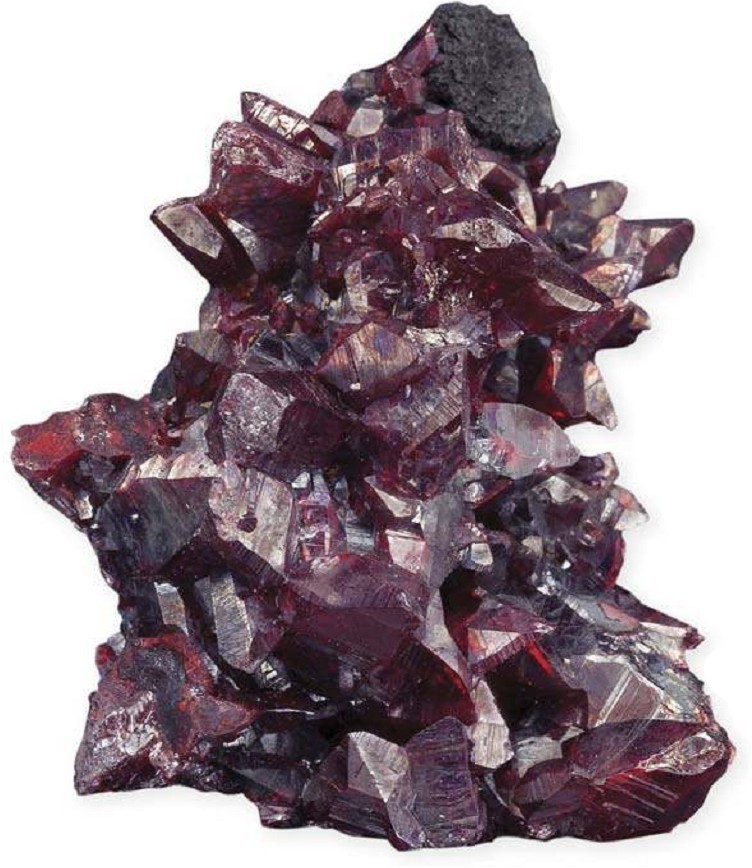STORY BY BOB JONES

Thumbnail specimen of proustite, mined in the Freiberg District, Saxony, Germany, with sharp, pyramids of deep red color and metallic luster. (HERITAGE AUCTIONS)
Today proustite, commonly called “Blood of the Bull” mineral, is hard to find. Native gold is rarely found as a compound, preferring instead to remain aloof from joining other elements. Silver, on the other hand, forms a variety of wonderful compounds that collectors treasure: waxy looking chlorargyrite, dark gray to black acanthite, stephanite, polybasite, and two fine red sulfosalts pyrargyrite and proustite.
The red color of these last two silver minerals makes them the most appealing and eagerly sought silver species. Collectors are overjoyed when they obtain a specimen of either of these silver compounds since today’s silver mines rarely encounter such specimens. Many found in the early centuries of silver mining have long since ended up in museums or in private collections.
Plus, there is the problem of proustite and pyrargyrite darkening with age and gradually losing their vibrant red colors. Of the two, proustite exhibits the richest red color and when found in quantity in Chanarcillo, Chile, was given the name Sangre de Torro, or Blood of the Bull. Pyrargyrite is a somewhat darker red color and is still occasionally found today in silver mines of Mexico.
Some 30 years ago, I was traveling in Mexico visiting silver mines with my son, Evan, and Bill Panczner and his son, Chris. This included a visit to a silver mine at Fresnillo, Chihuahua, Mexico. Prior to going underground, we were being escorted through the mill by an engineer.